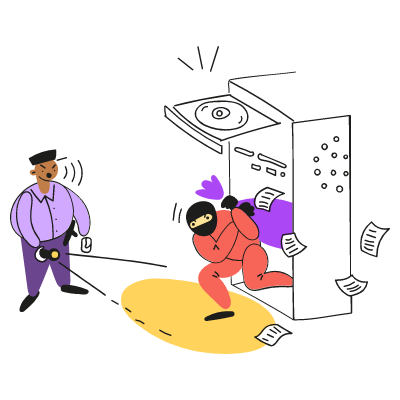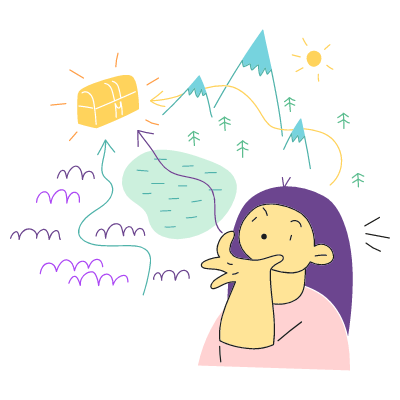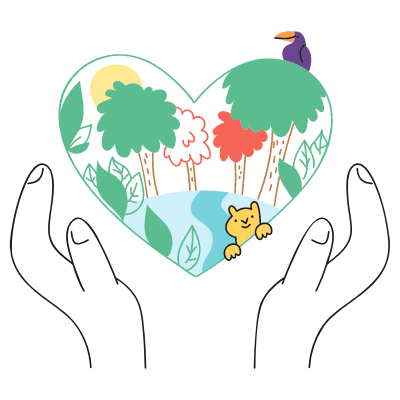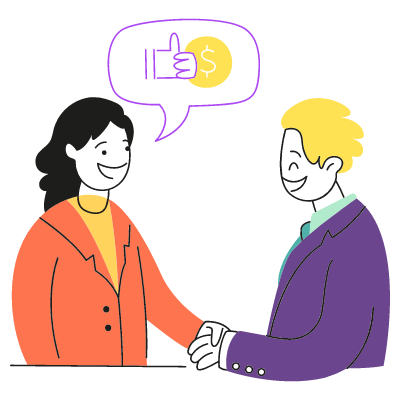This is a guest post by @justgoscha
Using NFTs to get some income as an artist is pretty daunting. What’s added on top is the heavy pushback from some of the art community online. In the following write up, I want to discuss some of the controversies surrounding NFTs, and then provide an ethical way of how they can be used.
There might still be better ways, so I would be happy if you provide your thought-out opinions in response.
There are known controversies surrounding NFTs. People claiming, it’s a Ponzi scheme, or the destruction to the environment it causes. With claims as high as one NFT burns as much energy as a 1-family household in a month. Depending on the NFT platform and blockchain these concerns are valid.

Emissions and Sustainable Alternatives
The discussions around eco-friendliness are usually very emotional. All cryptocurrencies and blockchains are thrown under the bus. Although there are cleaner alternatives. BTC (Bitcoin) and ETH (Ethereum) are the main offenders here. They are the oldest blockchains and are based on an old proof of work mechanism that is truly terrible in terms of power consumption.
Newer blockchains use proof of stake (PoS) mechanisms. Those do not require a high computational effort and therefor use just a tiny fraction of the energy.
Pretty much every responsible artist agrees that you should switch to use a more sustainable marketplace. Here’s a list.
There is a whole community interested in moving to cleaner solutions.

Art and Copyright Ownership
The other big controversial point is that with NFTs you are not buying the actual art piece. That’s right.
You don’t buy the art piece! And it is usually not even stored on the blockchain.
What do you get instead?
You are buying a digital token on the blockchain. This digital token belongs to you, and it can be proven via the blockchain who acquired, created or sold it.
In the metadata of the token there is usually a link to the actual artwork. This link points to a web address, which is usually a file on a server somewhere. If that page goes down the artwork is potentially gone. Although usually it should also save the hash of the file itself.
The metadata has also a name, a description and maybe some more metadata depending on the NFT you are acquiring.
What about the copyright? Or usage right? Is it not transferred to the buyer?
Short answer, NO.
Long answer is, usually no. You have to look into the Terms & Conditions of the platform you are using. But most them just give you the rights to resell the NFT on the platform and display it in digital NFT galleries.
Almost none of them transfers to you the copyright of the piece. Also not the commercial royalty-free use of the item in question.

Scam & Art Theft
It is a huge problem that art gets just downloaded and sold without permission of the original artists. In general all buyers should beware and verify with the real artists on their social media, or contact them directly before buying any of their work online.
Nobody prevents people from stealing pictures from Twitter, Instagram, ArtStation or other websites and selling them for prints, on T-Shirts, mugs, or cups and now also NFTs. Unfortunately this is the reality of digitized art.
There is a lot of money to be made, and therefore there is more theft happening. It’s like a new gold rush.
How can you prevent being scammed?
- Look that accounts are properly linked, and verified by the platform
- Look if NFT was created by the original creator of the art piece
- Contact the artist on his social media or contact email to be extra sure

Why Use NFT as an Artist?
After hearing all that is bad about NFTs you might ask yourself why use it at all?
The most obvious one is to get money for your art.
Artists that are starting out usually have a hard time supporting themselves of the work they do. You can sell commissions, you can work for companies and do illustration or design work. You will in most cases not be doing what YOU want, but what others want you to do for money.
“But why not use Patreon, KoFi, PayPal, Gumroad?”
There are multiple advantages:
- Lower Transaction Costs: Most platforms, take a considerable chunk of your payment.
- Less censorship: Platforms are bound to the rules of the country and often-time their own arbitrary rules and can take down your art at any point in time, and sometimes even lock-up your money. Especially erotic artists have it hard on all major platforms.
- Royalties / Resales: In most NFT markets you are getting royalties from resales. That means you don’t only profit from selling your art once. It can be recurring revenue over time.
I think the number one thing that NFTs did, is make the common people interested in “art” again. For a long time art was just something you went to see in a museum. The ownership and collecting of art was reserved for the rich, and to be honest also for money laundering for the rich.
Now many people think about the value of art in a different way. Sure, some of it sounds crazy, and you should probably not expect to make a million in your first months. But also, don’t compare yourself to the crazy numbers you see. The goal is to experiment and see if it works for you.
For those artists that it works out for it is an incredibly freeing thing, and allows them to make art that under other economical pressures would be impossible.

Guidelines for Creating Ethical NFTs
If you now decided you want to try out creating NFTs from your art let me give you some advice how to do it in an ethical way. Since I also would expect you to be a good and responsible person — why else would you have clicked on this article?
I have come up with the following rules and values:
- Use an environmentally friendly market (a good start is this list)
- Provide a value beyond the pure digital ownership of the NFT.
- Educate your buyers about what they are getting into.
Rule 1 — Use Environmentally Friendly Market
There are many markets out there to choose from. It might be tempting to choose the biggest one, which are a lot of time ETH based. But I think as artists that want a better future we have to push the markets relying on unsustainable technologies out of existence unless they change.
Rule 2 — Provide Value

People are riding the wave of NFTs right now and a year from now it could be that many markets that seem vibrant now won’t exist even if the blockchain they are running on survives.
Be sure that what you offer them provides a value for them beyond an NFT ownership. For example a license to use the work for a project, commercially or something else. It could be also a goodie that they can only see when they purchase it.
If you are not providing anything beyond the NFT, be honest and tell them at least, you are using it to support yourself as an artist and it will fund your ongoing work. Give them the feeling they are contributing to your success!
Rule 3 — Educate your buyers
Be sure your buyers know what they are getting into. Provide a good description of the thing they are receiving. And the most important thing is tell them what they are allowed to do with their art. The rights and licenses they have.
Can they use it on there social media?
Can they use it privately?
Can they use it commercially? (Put it in videos, make prints etc)
If you are following the exact guidelines of your market, than point them to that direction, but still give them a brief summary.
Even though it might not seem like your responsibility to do that, in the current state of things there is a lot of confusion what people are getting into.
Also tell them to back up the work on their hard drives, because links could die in the future.

Closing Words — Stay Safe, Explore, & Have Fun
New things can be scary, but also exciting.
It’s the wild west out there. People experiment with a ton of new things without any regulation. Uninformed greedy people get scammed. Others get rich.
Right now, the whole space is probably a bubble and it might crash and burn like the internet bubble in the 2000s.
I doubt it will go away entirely. Cryptocurrency, blockchain and smart contract applications are here to stay.
My general advice:
- If you don’t know what you are buying, better stay out
- Don’t ever spend money you really need or don’t have.
- Don’t get FOMO and buy into something just to satisfy it
And lastly — NFTs are not for everyone. If you don’t feel comfortable, don’t get pushed into it and don’t feel bad about “missing out”. It will bring you much further to invest into your development as an artist than following all the current trends.
Thanks for reading! I am exploring the world of NFTs myself at the moment and will release a set of my illustrations as a collection. The idea is to give away commercial usage right and mainly to fund a library of beautiful background illustrations that can be used on websites, social media and more. Similar to the StreamlineHQ illustration libraries used as illustrations for this article.
If you are interested in any way. Check out the project page or follow SereneScenes on Twitter!
Some credits:
- Headline illustration by justGoscha
- All other article illustrations by StreamlineHQ (A totally awesome illustration library)
—
re-published with kind permission from The Inspired Animator